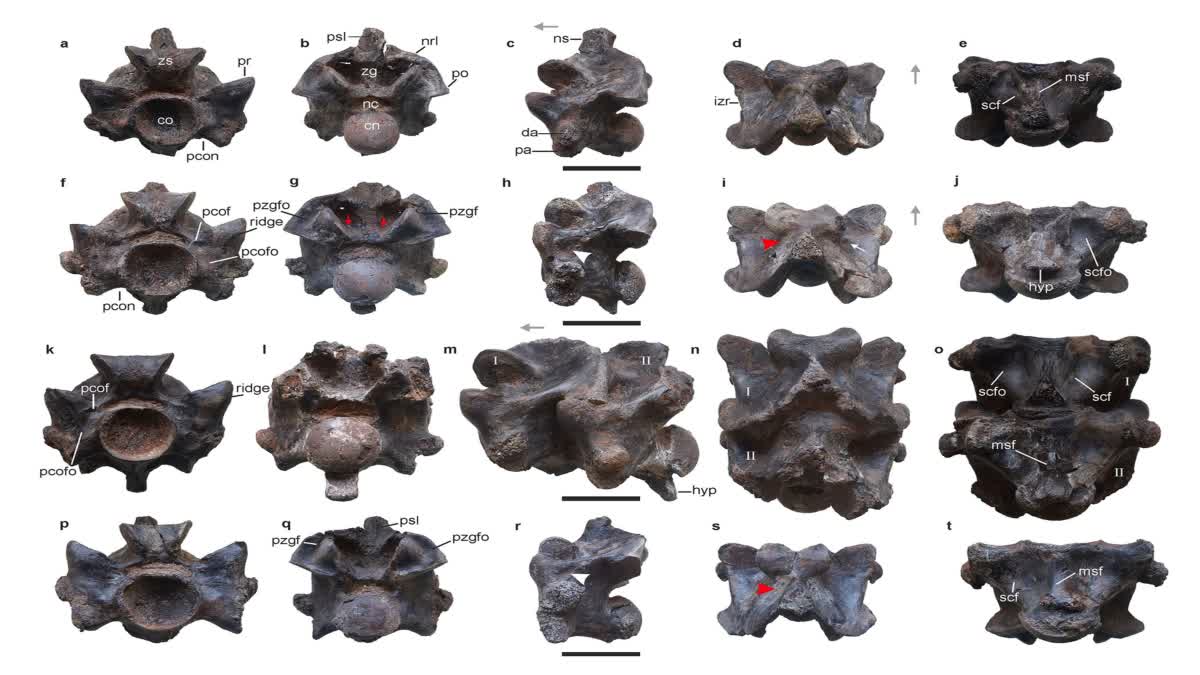Fossil Of 'Largest Snake To Have Ever Existed' Found In Gujarat Roorkee (Uttarakhand):In a ground-breaking revelation, scientists from the Indian Institute of Technology (IIT) Roorkee have made a monumental discovery. The team from the prestigious institute has unearthed what is believed to be the fossil remains of the largest snake ever to have roamed the Earth.
This colossal snake, Vasuki Indicus, named after the mythical king of serpents is said to have inhabited the region of present-day Gujarat during the Middle Eocene period, about 47 million years ago.
The team of scientists led by Professor Sunil Bajpai and Post-Doctoral Fellow Debjit Dutta, describe the discovery of Vasuki Indicus as nothing short of astounding. The serpent stretches as long as a school bus, measuring between 11 meters (36ft) and 15 meters (49.22ft) in length. The fossils of this ancient snake were discovered in the Panandhro lignite mine in Kutch, Gujarat, with 27 remarkably well-preserved vertebrae among the findings, some fitting together like interlocking puzzle pieces.
The newly discovered behemoth lived 47 million years ago in western India’s swampy evergreen forests. It could have weighed up to 2,200 pounds (1,000 kilograms), researchers said in the journal Scientific Reports.
Upon closer inspection of the vertebrae, researchers noticed distinctive features suggesting that the Vasuki Indicus had a wide cylindrical body shape, similar to the ancient Titanoboa, which was once thought to be the largest snake ever known.
This similarity has led researchers to hypothesize that the ancient Vasuki Indicus might have used similar hunting strategies to modern-day Anacondas, using stealth and patience to sneak up on prey. The findings also reveal new insights into the biology and evolution of snakes in the Eocene.
Fragments of the snake's backbone were discovered in 2005 by co-author Sunil Bajpai. The researchers compared more than 20 fossil vertebrae to skeletons of living snakes to estimate size. While it's not clear exactly what Vasuki ate, other fossils found nearby reveal that the snake lived in swampy areas alongside catfish, turtles, crocodiles and primitive whales, which may have been its prey, Datta said.
They illuminate the geographic distribution of the family Madsoidae, which stretched across Africa, Europe and India for about 100 million years. Dr. Bajpai stresses that this discovery is not only important for understanding India’s ancient ecosystems but also for unraveling the evolutionary past of snakes on the subcontinent, emphasising the importance of scientific research in understanding our past.
The unearthing of Vasuki Indicus adds to a recent surge of significant fossil discoveries in India, cementing the country's status as a prominent hub for paleontological research.
“The discovery of a giant Eocene snake has important implications for mastoid biogeography in the context of Gondwanan inter-continental dispersal and the evolution of large body sizes possibly driven by high temperatures in the Middle Eocene tropical zones,” the researchers wrote in their paper.
Read More
- Himachal Pradesh Village Gets Mobile Network for First Time; PM Modi Calls Residents
- Festival Celebrates Magic of Fountain Pens
- International Bat Appreciation Day 2024: Learning About Highly Misunderstood Animal
